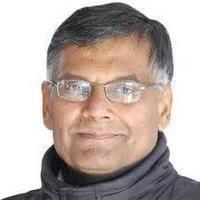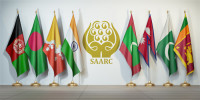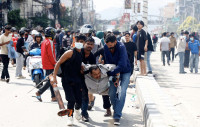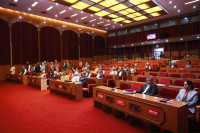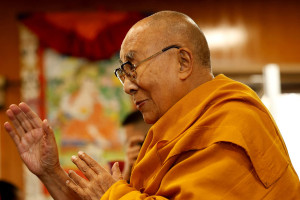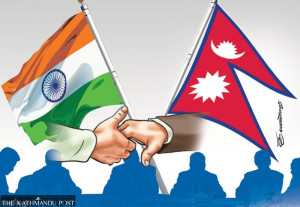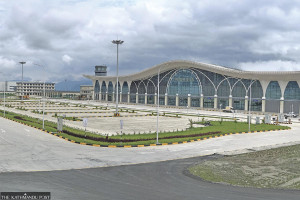Columns
Politics of attention economy
Sudan Gurung is a mirror to a generation learning to weaponise attention as its most potent resource.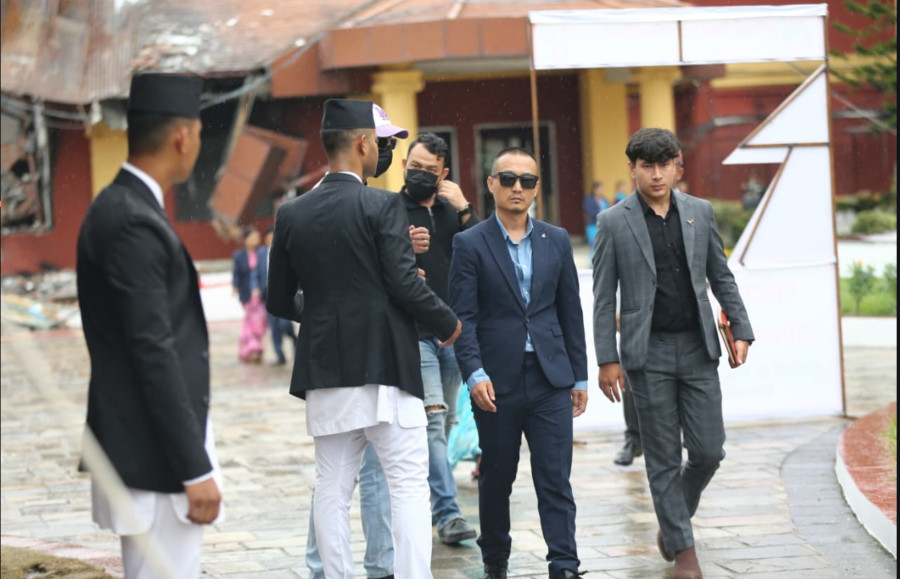
CK Lal
It’s been a month since the 9/8 protest tried to storm the parliament building, and at least 19 protestors lost their lives in subsequent police firing. Initially begun as a peaceful demonstration against a ban on social media, the collective of concerned citizens soon turned into an agitated crowd and then an irate mob of emotionally charged arsonists and vandals. The violent anarchy that engulfed the country from the very next day—dozens of innocent lives lost, billions worth of property destroyed and a complete collapse of governance—has since begun to be referred to as “Gen Z” protest as if naming so will absolve participants of all their responsibilities.
If the initiators of the protest have a claim over the outcome of the protests—the ousting of government, sending the constitution into limbo, forming a government in consultation with the Nepal Army and the dissolution of the parliament—it stands to reason that they should also bear at least the moral responsibility for the loot, arson and loss of life after the ban on social media was lifted, the-then Prime Minister Khadga Prasad Sharma Oli resigned under duress and prominent politicos helicoptered out to unknown locations for safety.
It seems that just as the initial demonstration in the morning of September 8 wasn’t “non-political”, its aftermath since September 9 has been even less so. Circumstantial evidences show that nothing less than a regime change was the primary agenda of the 9/8-9 protests carefully choreographed by “vested interests”. The whitewashing of the sequence of events began with the choice of a name that would connect it with somewhat similar urban uprisings elsewhere in Asia.
The expression “Gen Z” is a prime example of the politics of naming. It framed outbursts of outrage as peaceful agitation, linked youthfulness with an aura of innocence, influenced masses to interpret the excesses of the mob as mere inexperience, and generated widespread support for a movement that probably had a disturbing objective. Words become powerful propaganda tools when they do more than describe reality—when they reshape it, influence perception, create associations, and steer behaviour—their impact can be incredible.
If naming is necessary at all, perhaps the 36-hour urban uprising that upturned the post-2015 political order in the country can more appropriately be called the “Fall Protests, 2025” that signifies the season as well as the impact it had when institutions, instruments and individuals fell from their pedestals of state power like yellowed leaves of deciduous trees. The name that fits the group that initiated the campaign against the ban on social media through social media—the irony will only be lost to those that are still unaware of Virtual Private Networks (VPNs)—is Gen T or the TikTok Generation, a cohort that prides itself on having a shorter attention span than all their predecessors.
Gen T is not limited to just Gen Z; it also includes late-millennials such as the ex-rapper and present mayor of Kathmandu Balendra Shah and the mysterious claimant of leadership of the Fall Protests Sudan Gurung, because they are as adept, if not more, in using social media tools of propaganda to project their image and manipulate public opinion as Gen Z activists.
Poster boy
During social gatherings this Dashain in Kathmandu, Sudan Gurung—SG hereafter to denote his mystery—emerged as the most talked about person. He has arisen as an easily recognisable face of the Gen T protests—the smartest kid on the block in a movement that began without a leader but soon required coordination and representation. Initially a volunteer distributing drinking water to protesters braving teargas and curfew, he adroitly positioned himself outside of horizontal movement that opportuned him to climb to the top without causing rancour.
An online poll on Discord, Gent T’s faith in digital legitimacy, propelled SG into the role of the chief negotiator with the army during the height of the confrontation. His image—part activist, part agitator, part celebrity, part civic organiser—came to embody both the aspirations and contradictions of a constantly wired cohort.
His proximity to the interim political establishment has added complexity to his profile. His appearance at the President’s tea reception on Constitution Day drew attention and criticism alike: To some, it was a gesture of engagement; to others, a sign of co-option. His controversial demands for sweeping accountability and systemic reform, though sometimes impractical, kept him in the headlines.
The international media soon discovered in him a convenient symbol—a boyishly photogenic youth with a shaven head provocatively articulating aspirations of a digitally mobilised generation demanding transparency, dignity and voice. As coverage expanded, so did his reach; social media metrics have transformed him into a new form of political capital.
Apparently, SG knows that radicalism has a higher market value in times of uncertainty. Recently, he has called for the arrest of former prime minister Sharma Oli and the former home minister Ramesh Lekhak. Perhaps in a form of competitive extremism, the so-called Gen Z Movement Alliance has asked for “the resignation of Chief Commissioner Prem Kumar Rai and other commissioners of the Commission for the Investigation of Abuse of Authority, saying the anti-graft body has failed to tackle corruption and political interference”.
Some Gen T activists want the justices of the Supreme Court to be removed. A few fringe voices have also emerged for a system of governance with a directly elected head of government, even as the schedule of elections for the formation of Pratinidhi Sabha has been announced. But SG remains ahead of the curve in positioning himself in the public mind.
Participatory disinformation
In many ways, SG personifies the logic of the attention economy. He understands that in a world ruled by algorithms, visibility equals power. Each public gesture—distributing water, attending official ceremonies, rejecting tea, or posting reflective captions—becomes part of a deliberate choreography of meaning. His mastery lies in converting fleeting moments into enduring images, harnessing outrage and admiration alike to sustain engagement. The more his critics question his motives, the more his name circulates, reinforcing his symbolic centrality.
Whether high visibility translates into lasting leadership remains uncertain. Yet SG’s ascent illustrates a broader transformation: In the age of the attention economy, influence is no longer bestowed by hierarchy or ideology but seized through narrative control and digital resonance. In that sense, he may not just be a leader—he is also a mirror held up to a generation learning to weaponise attention as its most potent resource.
The politics of attention economy has at least three pitfalls. First is the “information bubble” effect inherent to algorithmic media that reinforces confirmation bias. Second is the emergence of “participatory disinformation”, where users circulate malicious falsehoods for partisan objectives. The third, and perhaps the most dangerous, everything and everyone becomes suspect as post-truth appears as the only reality to the post-literate society.
Paradoxically, the analogic version of the participatory disinformation model was perfected by the trio that must bear the brunt of digital activism. Sharma Oli revelled in motivated falsehoods. Sher Bahadur Deuba lived in an information bubble. Pushpa Kamal Dahal drowned in post-truth ideology. After decades of manipulative politics, their collective downfall was inevitable. The comeuppance was fated.




 19.12°C Kathmandu
19.12°C Kathmandu